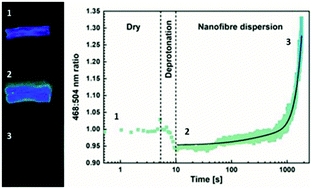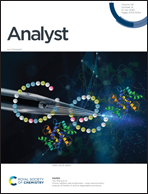Employing photoluminescence to rapidly follow aggregation and dispersion of cellulose nanofibrils†
Abstract
Photoluminescence of cellulose, and other polysaccharides, has long been presumed to be due to contamination of the material by other autofluorescent compounds – such as lignin, or proteins. This is attributed to the lack of known fluorescent chemical groups present in the molecular structure of polysaccharides and the weak emission intensity when compared to typical fluorophores. However, recent research suggests that the observed luminescence may actually be due to transitions involving the n orbitals containing lone electron pairs present in oxyl groups, stabilised by the molecular forces between the polysaccharide chains. Here we investigate this theory further by varying the physicochemical environment (concentration and pH) of oxidised cellulose nanofibril suspensions and observing the resultant fluorescent spectra using multi-channel confocal laser scanning spectroscopy. We confirm that both factors affect the material photoluminescence, specifically changing the intensity ratio between two localised emission maxima, supporting current theories. Furthermore, we demonstrate that this variation enables the determination of critical aggregation concentrations and the apparent pKa values of hydroxyl groups that undergo deprotonation within the examined pH range, enabling use of the technique to track rapid changes in the fibril physicochemical environment.



 Please wait while we load your content...
Please wait while we load your content...